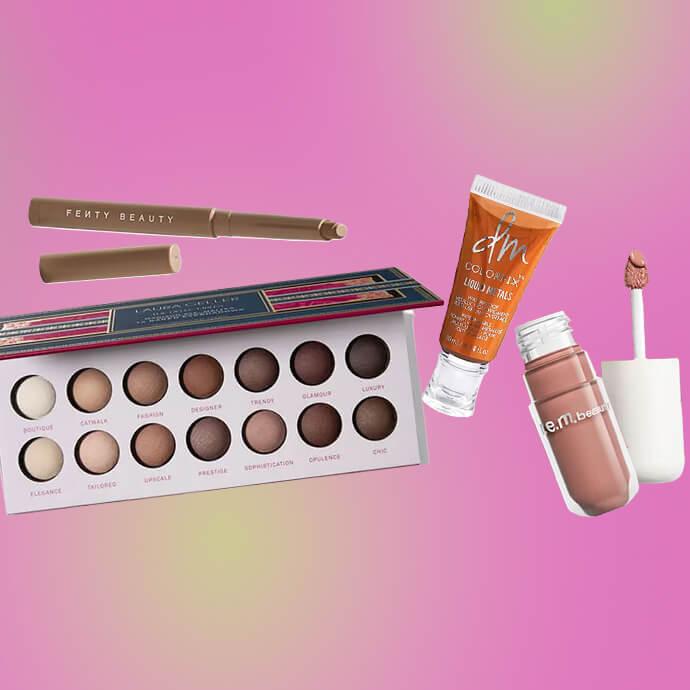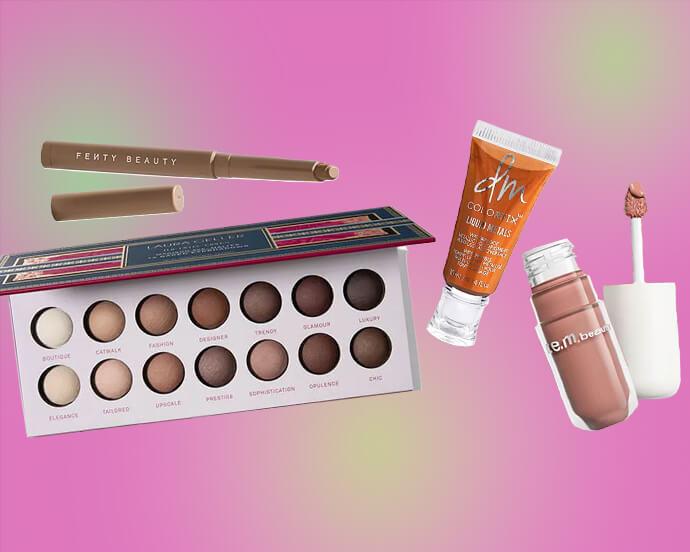Everything You've Ever Wanted to Know About Eyebrow Threading



Lindy Segal


In the age of bold brows, we’re all looking to achieve the perfect—but not too perfect—eyebrow shape. There are many eyebrow-shaping options out there, which makes landing your go-to brow an important decision. Choosing the right grooming technique for your brows can even make or break the shape and the health of your brow hairs.
Eyebrow threading, the centuries-old technique for removing unwanted hair, continues to reign as a popular alternative to waxing and tweezing, and for good reason.
It’s often considered less painful than waxing, as threading crafts your desired shape without ripping off a layer of skin in the process. You can remove any facial hair (your upper lip, for instance) by threading it, but threading is the most popular with eyebrow shaping.
To learn everything you need to know about this hair-removal technique, we caught up with Vanita Parti, founder of brow and lash bar BBB London, and Joey Healy, celebrity eyebrow specialist. Read on to find out exactly what threading entails, how painful it really is, how much it costs, and more.


It's about glam time you treated yourself.
MEET THE EXPERT
Vanita Parti is the founder of brow and lash bar BBB London.
Joey Healy is a celebrity eyebrow specialist.
So, What is Eyebrow Threading?
If you thought microblading was an interesting process, you definitely haven’t seen eyebrow threading in action. “Threading involves winding cotton thread into a rope and using it to grab each hair, pulling it out by the roots,” explains Parti. “It can be hard to envision, but it acts like a lasso, grabbing the hair as a tweezer would and pulling it as it glides along your brows.” Because each hair is removed individually, your brow technician has much more control over the final shape than, say, waxing, in which dozens of hairs are removed at once. And don’t worry, it doesn’t take all day; technicians’ hands are lightning fast, so the appointment lasts around the same amount of time as an eyebrow wax would.
What are the Benefits of Brow Threading?
It's super precise: Because threading allows your technician to give attention to each individual hair, it’s one of the most effective methods for controlling the shape of the brow.
It’s great for peach fuzz: “As the therapist guides the thread, they can ensure a perfect shape and it is easy to get symmetry for both brows,” explains Parti.
It lasts longer: “Unlike tweezing, the look will last longer too. [The thread] grabs each hair by the roots, so there is a clean finish and therefore slower growth.” adds Parti.
It’s safer for sensitive skin: When compared to waxing, threading is a safer option for sensitive skin. If any redness does occur after treatment, apply a little bit of aloe vera gel to calm the affected area. “Threading is usually a better option over waxing because there is no heat or chemicals and is a bit more gentle on the actual skin around your brows,” says Healy.
Does it Hurt?
Although you may have heard threading being touted as “painless,” the truth is, it can still hurt, similar to how tweezing your eyebrows hurts. “I would say it has a pain factor of five out of 10,” says Parti. “The first experience always hurts more, and then you become used to the sensation.” However if you’ve done a lot of waxing and other brow maintenance before, it may not feel like anything at all. “Pain threshold is very different for different people. If you have strong hair and hair follicles, it can be more painful,” explains Parti. If you tend to be sensitive to pain or just want to get your bearings, she recommends asking your technician to test it out on the back of your hand so you can feel what it’s like in a less sensitive area.
“To prep yourself, you want clean skin free of all skincare, sun care, and makeup products. Typically, threading is a bit painful or uncomfortable because the thread is plucking the hairs out and usually multiple hairs at a time,” says Healy. Come to your appointment with a clean, fresh face to make the process easier for your technician.
How Much Does Threading Cost?
One of the best things about threading as a method of hair removal is that it’s relatively inexpensive. It can cost as little as $10 and up to $40, depending on the brow expert you’re seeing and your location. Of course, it’s not a one-time cost, so it’s worth budgeting for several threading appointments per year.
Are There Any Disadvantages?
Threading is generally considered safe for most skin types, and there are few risks or side effects associated with the treatment (aside from the obvious mild pain factor). You may want to hit pause on threading—or any hair removal, for that matter—if you’ve recently had any invasive or non-invasive facial treatments that have made your skin more sensitive than usual.
“Although threading is better than waxing, it’s definitely not as precise as tweezing, in which you can be more selective of which exact hairs you are extracting. There is a higher chance of causing asymmetry between the brows or the removal of the peak of your brow when threading because, again, it is not as precise as tweezing,” says Healy.
One thing to keep in mind is you’re going to be asked to hold your skin taut while your brow specialist threads your eyebrow hairs. “The client is required to hold the skin on their face taut while the specialist moves along with the threading,” explains Healy. For your first time, this may feel a bit strange, but you’ll become a pro in no time.
Will Irritation Occur?
In some cases, yes. With any epilation process, there is always a chance for irritation. You’re plucking out hairs from their follicles that were otherwise happy to be there. While threading is a better option than waxing if you have sensitive skin, it can still be a sensitizing process. “If you don’t have a higher pain tolerance, this will probably not be the easiest hair removal technique for you. And if you move a lot during services like these, you will increase the chance of uneven brows,” says Healy.
If you’re still curious about threading and are up to try this treatment, be sure to calm your skin down afterwards with an aloe-based product. This will help soothe your skin and reduce redness from the threading.
How Long Does Brow Threading Last?
“Threading normally lasts for about four weeks, depending on hair growth,” says Parti. For those keeping score: longer than plucking, but not quite as long as waxing. And tempting as it may be to pluck those stray hairs that crop up, Parti advises against it. “Tweezing in between appointments is not advisable so that you train your brows to grow at the same time,” she explains. This way, she says, “you get a perfectly smooth finish when you visit the salon.”
If you’ve been on the fence about threading, it’s worth booking an appointment whether you’re in need of a full brow makeover or just a tune-up. Between the low cost, low time commitment, and (relatively) low level of pain, threading is nearly a fail-safe option. And if you have a “Brow Goals” Pinterest board, now’s the time to share it; you want to clearly communicate your ideal results with your brow technician, no matter what type of shaping technique you go with in the end.
Want to learn about more brow techniques and the best brow products? Take our Beauty Quiz now to get started with your own beauty subscription. Already a member? Refer your friends to earn points, which you can use toward products. Either way, don’t forget to check us out on Instagram and TikTok @IPSY.
Like this article? Share it with your friends by clicking the icons below!
Liked this post? Share!
Related Stories


Makeup
How to Expertly Apply Eyeshadow on Mature Skin
Published on Dec 10, 2025 • 6 min read


Makeup
How to Use Bronzer and Contour to Sculpt Your Face Like a Pro
Published on Dec 5, 2025 • 9 min read


Makeup
Makeup for Older Women That Works With Your Skin, Not Against It
Published on Dec 1, 2025 • 12 min read


Makeup
2026’s Biggest Makeup Trends Are a Maximalist Dream
Published on Dec 1, 2025 • 8 min read


Makeup
2025’s Biggest Makeup Trends: Go Big or Go Home
Published on Dec 13, 2024 • 7 min read


Makeup
16 New Year’s Eve Makeup Ideas to Fashionably Ring in 2026
Published on Nov 25, 2025 • 10 min read


Makeup
Your 2026 Beauty Horoscope Is Here—and the Stars Are Serving Looks
Published on Nov 25, 2025 • 9 min read


Makeup
Holiday Party Makeup Ideas for When You Want to Go Full Festive
Published on Nov 24, 2025 • 9 min read


Beauty Picked Just for You
Get 5 products worth up to $70
Plus exclusive access to epic deals up to 80% off
Starting at just $14/month. Cancel anytime.